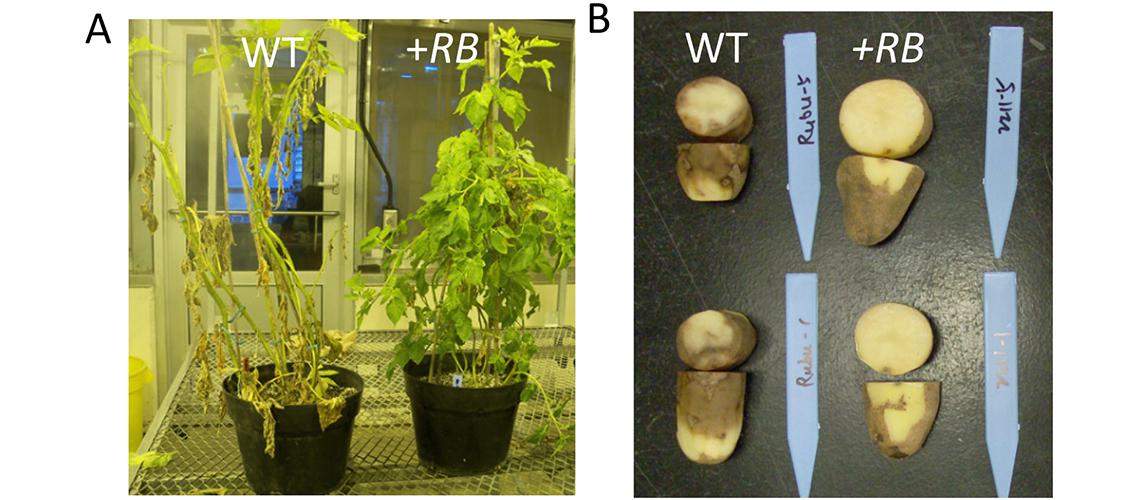
Late blight is a serious crop disease that affects potatoes and costs the potato industry billions of dollars annually. The responsible pathogen, Phytophthora infestans, can infect both potato foliage and the tuber. ‘Russet Burbank’, a popular processing variety of potato, lacks genetic resistance to P. infestans. But introduction of gene RB from a wild potato species yielded some ‘Russet Burbank’ genotypes with late blight resistant foliage but susceptible tubers and other genotypes with resistance in both foliage and tubers. These genetic lines comprise an excellent test system in which to study how different parts of a single plant can be resistant – or not – to a single pathogen.
Professor James Bradeen (Head, Department of Plant Pathology) and former Ph.D. student Liangliang Gao recently published a paper that compared the transcriptomes of late blight susceptible ‘Russet Burbank’ and a derived line resistant in both foliage and tuber. They used genetics software available through MSI, including Cufflinks and TopHat, to read and analyze RNA-seq data. The study identified some genes that affect both foliage and tuber resistance and others that seem to be organ-specific. This research provides insights into how plants regulate disease resistance and how resistance genes can be used to reduce the need for chemical fungicides. The paper was published in the journal PLoS One in July 2016: Contrasting Potato Foliage and Tuber Defense Mechanisms Against the Late Blight Pathogen Phytophthora infestans. 2016. L Gao and JM Bradeen. PLoS One 11, (7) (JUL 1), 10.1371/journal.pone.0159969.
The Bradeen research group uses MSI to develop tools for genomics studies to discover disease resistance genes in crop plants and their wild relatives and to understand plant defense mechanisms. Professor Bradeen is featured in the “Abolish Hunger” category of the University of Minnesota’s 2016-17 Driven to Discover campaign: I am driven to grow more food with fewer resources.
Image description: The RB transgene confers resistance against P. infestans in potato foliage and tubers. (A) Foliage phenotypes. Photo was taken three weeks after spray inoculation with P. infestans under moist greenhouse conditions. (B) Tuber phenotypes. Six week old (post-harvest) potato tuber was inoculated with P. infestans, photo was taken two weeks after inoculation (for details on inoculation procedures, see: Gao LL et al. BMC Genomics 14:340, 10.1186/1471-2164-14-340 (2013)). In both cases (tuber or foliage) WT indicates nontransformed ‘Russet Burbank’, +RB indicates transgenic line SP2211 (‘Russet Burbank’ +RB), which carries 15 copies of the RB transgene. Image and description, L Gao and JM Bradeen. PLoS One 11, 10.1371/journal.pone.0159969 (2016).
posted on February 1, 2017